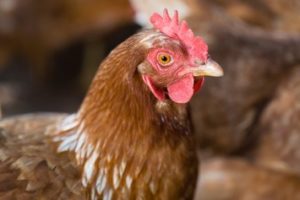The poultry giant Tyson Foods is taking steps to create “a better workplace,” which includes enhanced safety and health protection for 95,000 U.S. employees. Keep reading to find out what’s likely to change.

Zero Creatives / Cultura / Getty Images
Tyson, one of the world’s largest meat and poultry producers, announced efforts to create better working conditions at its production facilities. Based in Springdale, Arkansas, Tyson has repeatedly been cited and fined by OSHA for amputations and other workplace incidents.
Chief Operations Officer Noel White said that while Tyson has always been committed to supporting employees and has sound workplace practices in place, the company can do better. In a press release, the company said it will continue its commitment to zero worker injuries and illnesses and will strive for a 15 percent year-over-year reduction in injuries and illnesses. Tyson said it plans to add 25 or more trainers to its stable of training professionals.
Other elements of the enhanced commitment include:
- Expansion of a safety communications program,
- Continued participation of hourly workers in plant safety councils, and
- A pilot program to increase base wages and accelerate the time it takes to reach higher wage levels.
The changes planned by Tyson were welcomed by United Food and Commercial Workers (UFCW) International Union President Marc Perrone, who says the union’s partnership with Tyson has already yielded significant benefits. “We look forward to these new and expanded initiatives and to continuing to work tougher to provide a better, safer workplace for the hard-working men and women at Tyson Food,” Perrone added.
Among other regulatory actions, OSHA cited Tyson last August and fined the poultry producer more than $263,000 in conjunction with “a gruesome employee injury.” When inspectors arrived to look into safety concerns at the Tyson plant in Center, Texas, they found more than a dozen serious violations involving safety guards, carbon dioxide levels, PPE, and chemical exposures.
